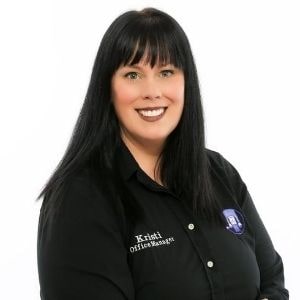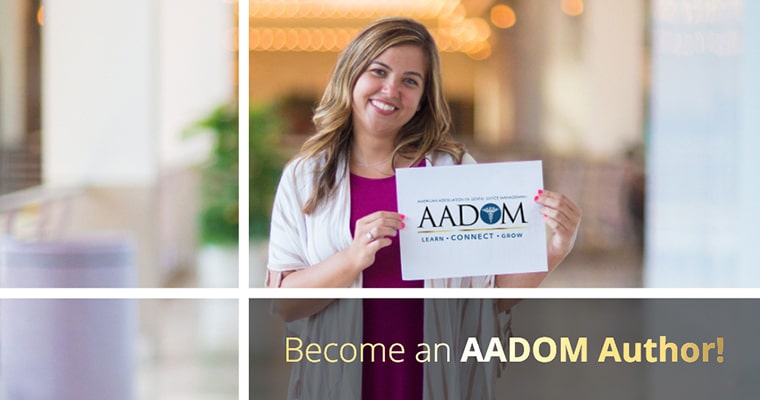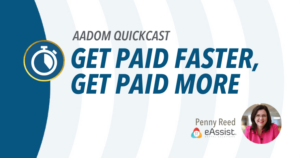How Is Your Patient Check-Out Handoff? [Tips to Improve It!]

Have you ever really given thought to your patient check-out handoff? Does your team know how much this step can impact scheduling and future practice production?
Trained clinical team members who effectively communicate patient needs at check-out help ensure that the business team keeps patients happy and the practice profitable.
Let’s look at some of the elements and tips to help your team become skilled superstars!
What to say during patient check-out
Here is an example of a proper handoff between Alicia, the clinical dental assistant, Scott, the patient, and Amanda, the dental scheduling coordinator.
Alicia: “It was our pleasure seeing you today, Scott, and thank you for coming in. Amanda will be able to help you schedule your next visit with us in six months.”
If Scott needs a restorative appointment, Alicia would look directly at Amanda and say, “Amanda, the doctor would like to see Scott for an additional 1-hour morning restorative appointment within the month, but no later than two months if possible.”
Amanda: “Thank you, Alicia! Scott’s smile looks great! You both make a great team! Scott, let’s look at our schedules and find a time that works. The doctor would like to see you in the morning within the month for this restorative visit, if possible. Which day of the week do mornings work best for you?”
Why this interaction is optimal for patient check-out handoff
Let’s look at a breakdown of the above-mentioned simple interaction and the importance of the verbiage that was chosen.
What Alicia said to Scott: It’s important to thank the patient each and every visit, and addressing them by name makes it personal.
By saying Amanda’s name, it also creates a personal connection between the individuals and informs Scott of a time frame expectation for his next appointment.
What Alicia said to Amanda: Although all of this information was already relayed to Amanda via computer, by verbally stating it in front of the patient, Alicia has given control to Amanda, who will maintain scheduling guidelines for maximum daily production.
Choose words such as restorative, because it’s a more thoughtful and gentle choice than filling or cavity. Words like cavity can make people feel judged, shamed, or embarrassed, especially if there are other patients within earshot. Also, the word restore means to bring back and doesn’t carry a negative connotation.
It is intentional to say, “the doctor would like a 1-hour morning restorative appointment.” Saying “doctor” gives credibility to the diagnosis and authority of when the appointment needs to be scheduled.
If Scott replies that he would like an afternoon appointment, respond with, “The doctor requested to see you for a morning appointment since she needs the time just for you for this type of procedure. Which morning works best for you?”
You have now made the appointment time about Scott’s needs, and not that it is a more convenient time for the practice. You have also redirected it back to a morning appointment without saying the word no.
Alicia also stated the appointment should be within a month, but no longer than two. Always aim for your next availability, but in case you have a full schedule, you know you have permission to schedule up to two months out.
It also suggests to the patient that they ought not to wait too long or push out the appointment past the two-month mark. This will also help you reach your practice production goals in a timely manner!
What Amanda said to Alicia: It’s important to acknowledge the skills of your talented team members. By thanking Alicia, complimenting the patient’s smile, and saying they are a great team, it gives warmth and positive reinforcement for the visit and builds on the relationship the patient has with your practice.
By role-playing as a team, the conversation will become second nature and help everyone be smooth and seamless. In just two brief interactions, your team can perfect an amazing patient check-out handoff!
Not only will you have happier patients and a more productive schedule, but you can continue to build on the positive clinical and business team relationship!!
Meet the Author
 Kristi Abrahamsen… This text opens a new tab to Kristi’s about page…, FAADOM is privileged to serve as the President and a Member of the Bay Area, CA AADOM Chapter… This text opens a new tab to the Bay Area chapter’s website….
Kristi Abrahamsen… This text opens a new tab to Kristi’s about page…, FAADOM is privileged to serve as the President and a Member of the Bay Area, CA AADOM Chapter… This text opens a new tab to the Bay Area chapter’s website….
Since 1991, she has worked in multiple capacities throughout both orthodontic and periodontic specialty practices. In addition to being a registered dental assistant, she currently leads as a dental office manager for Gila C. Dorostkar, DDS Pediatric Dentistry… This text opens a new tab to the practice’s website…, a multi-location, multi-doctor practice in the San Francisco Bay Area.
Kristi is a Disney Institute alumni and shares her strong passion for outstanding customer service and commitment to excellence with her team.







